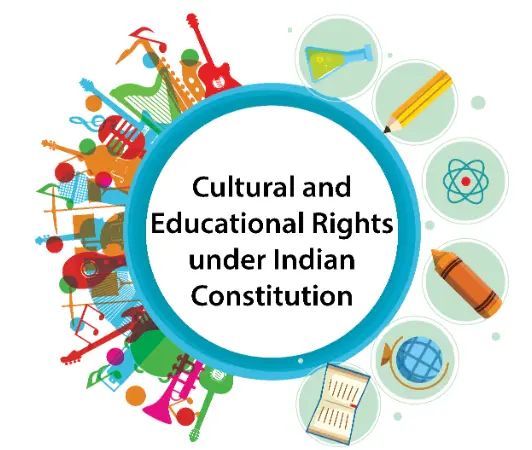Introduction
In a diverse country like India, protecting the rights of various cultural and linguistic groups is crucial. The Indian Constitution, under Articles 29 and 30, ensures that every community, especially minorities, has the right to preserve its unique cultural identity and manage its own educational institutions. These articles are fundamental to maintaining India’s rich diversity.
What Are Cultural and Educational Rights?
Cultural and educational rights are constitutional safeguards that protect the interests of minorities, allowing them to preserve their culture and establish educational institutions of their choice. Let’s break down these rights:

Article 29: Safeguarding Cultural Identity
Article 29(1) is all about preserving culture. It ensures that any group of citizens with a distinct language, script, or culture has the right to conserve their heritage. This means that if a linguistic or cultural community wishes to maintain their traditions, the government cannot stop them. For example, Tamil-speaking communities in non-Tamil regions have the right to promote and preserve their language without government interference.
In addition, Article 29(2) prohibits discrimination based on religion, race, caste, or language in state-funded educational institutions. So, no matter your background, you cannot be denied entry into a public school or college based on who you are or the language you speak. This promotes equal access to education across India.
Article 30: Empowering Minorities to Establish Schools
Article 30 goes a step further by giving religious and linguistic minorities the right to establish and manage their own educational institutions. This means that a minority group, whether it’s a linguistic or religious minority, can run schools and colleges that cater to their community’s needs.
For example, a Bengali-speaking minority in a non-Bengali state has the constitutional right to open a school where Bengali is the medium of instruction. They also have the autonomy to manage how that institution is run, as long as they follow broader state regulations.
The courts have consistently supported this right. In the landmark case D.A.V. College v. State of Punjab, the Supreme Court ruled that a minority institution cannot be forced to adopt the regional language as the sole medium of instruction, preserving their right to teach in the language of their choice.
Why Are These Rights Important?
In a country with over 19,500 languages and dialects, protecting cultural and educational rights is crucial for maintaining India’s diversity. These rights prevent the erosion of minority languages and customs, ensuring that each community has the tools to educate its future generations in a way that respects and preserves its unique identity.
Moreover, these provisions help prevent discrimination in education, fostering inclusivity and equal opportunity for all citizens, regardless of their background. Articles 29 and 30 not only protect minority rights but also strengthen India’s social fabric by promoting unity in diversity.
Key Legal Cases and Interpretations
The judiciary has played a key role in interpreting and upholding these constitutional rights. In State of Bombay v. Bombay Education Society, the Supreme Court ruled that the government cannot restrict admission to schools based on language, upholding the right of all citizens to access education equally.
Another significant case is D.A.V. College, Bhatinda v. State of Punjab, where the court protected the right of a minority institution to choose its medium of instruction. This decision reinforced the autonomy of minority-run schools and colleges in preserving their cultural identity through education.
Final Thoughts
India’s strength lies in its diversity, and Articles 29 and 30 are crucial to preserving this vibrant cultural mosaic. These constitutional provisions ensure that no community feels marginalized and that minorities can maintain their heritage while contributing to the nation’s educational landscape.
By empowering communities to preserve their languages, scripts, and cultures through education, the Indian Constitution ensures that diversity is not just protected but celebrated.
FAQ’s
What are cultural and educational rights?
Cultural and educational rights in India safeguard minority communities by allowing them to preserve their culture and establish their own educational institutions.
What does Article 29 of the Constitution cover?
Article 29 ensures that citizens with a distinct language, script, or culture have the right to conserve their heritage, and prevents discrimination in state-funded educational institutions.
What rights do minorities have under Article 30?
Article 30 gives religious and linguistic minorities the right to establish and manage their own educational institutions, preserving their cultural identity.
Also Read: Right Against Exploitation Article 23 – 24
Reference: testbook.com